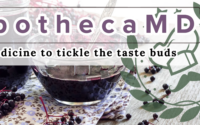Dissecting dietary and semisynthetic volatile phenylpropenes: A compile of their distribution, food properties, health effects, metabolism and toxicities
Crit Rev Food Sci Nutr. 2022 Jun 16:1-20. doi: 10.1080/10408398.2022.2087175. Online ahead of print.
ABSTRACT
Phenylpropenes represent a major subclass of plant volatiles, including eugenol, and (E)-anethole. They contribute to the flavor and aroma of many chief herbs and spices, to exert distinct notes in food, i.e., spicy anise- and clove-like to fruit. Asides from their culinary use, they appear to exert general health effects, whereas some effects are specific, e.g., eugenol being a natural local anesthetic. This review represents the most comprehensive overview of phenylpropenes with respect to their chemical structures, different health effects, and their food applications as flavor and food preservatives. Side effects and toxicities of these compounds represent the second main part of this review, as some were reported for certain metabolites generated inside the body. Several metabolic reactions mediating for phenylpropenes metabolism in rodents via cytochrome P450 (CYP450) and sulfotransferase (SULT) enzymes are presented being involved in their toxicities. Such effects can be lessened by influencing their pharmacokinetics through a matrix-derived combination effect via administration of herbal extracts containing SULT inhibitors, i.e., nevadensin in sweet basil. Moreover, structural modification of phenylpropanes appears to improve their effects and broaden their applications. Hence, such review capitalizing on phenylpropenes can help optimize their applications in nutraceuticals, cosmeceuticals, and food applications.
PMID:35708064 | DOI:10.1080/10408398.2022.2087175

